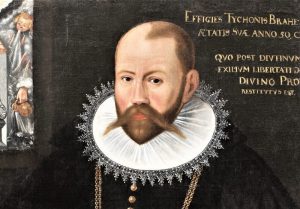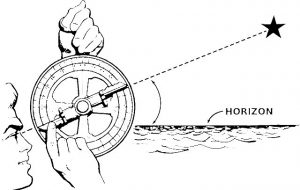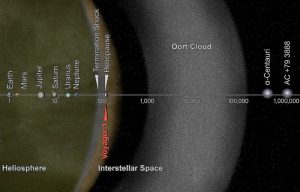Tycho Brahe
The astronomer of Danish origin, Tycho Brahe, was in charge of making the most precise observations of the sky in his time and with these, he challenged the belief that existed about how the universe was organized. And while most people may think that scientists are and were people who lacked interesting things in their lives, the extravagant lifestyle and misfortune of his death would have made him one of the wildest celebrities today. His work was based on the development of different astronomical instruments and on the measurement and fixation of star positions which facilitated the research path for future discoveries. His observations, which by the way were the most precise that could have been made before the invention of the telescope, included an exhaustive and deep study of the solar system and the precise positions he made of more than 777 fixed stars.

Personal information
- When he was born: 14/12/1546
- Birthplace: Knudstorp Castle, Svalöv, Sweden
- Deceased: 24/10/1601
- Where did he die: Prague, Czech Republic
Who was Tycho Brahe?
Tycho Brahe was an astronomer of Danish origin who implemented a model based on heliocentric theory and Ptolemaic Geocentrism by making a series of different observations in the sky, with which he claimed that the universe was very organized.
Biography of Tycho Brahe
Tycho Brahe’s father was private advisor and later governor of Helsingborg Castle. His uncle was very wealthy and had no children, so he decided to kidnap Tycho at a very early age and, after the shock of his parents was overcome, raised him in his castle in Tostrup, Scania, also financing the education of the young man, who began studying law at the University of Copenhagen in 1559.
A series of natural events prompted him to move from law studies to astronomy. The first was the total solar eclipse predicted for August 21, 1560. His mathematics teacher helped him with the only printed astronomical book available, Ptolemy’s Almagesto. Other masters helped him to build small balloons, in which the stars’ positions could be traced, and crossed compasses and rods, with which he could estimate the angular separation of the stars.
The first astronomy work he did was in 1573, and it was about the birth of a nova in Cassiopeia. In 1562, Tycho’s uncle sent him to the University of Leipzig, where he studied until 1565. His first recorded observation was about a conjunction or superposition of Jupiter and Saturn. Between 1565 and 1570 he travelled throughout Europe, and studied in Wittenberg, Rostock, Basel and Augsburg and acquired mathematical and astronomical instruments, including a large quadrant. In 1571 he built a small observatory and it was there that the third and most important astronomical event in Tycho’s life took place.
On November 11, 1572, he found a new star that was brighter than Venus and where there was not supposed to be any star, in the constellation Cassiopeia. He carefully observed the new star and showed that it was beyond the Moon and, therefore, was in the fixed star kingdom.
Tycho Brahe died in 1601 at the age of 54. While attending a banquet, Brahe had drunk excessively, but refused to go to the bathroom. It is believed that this caused his bladder to burst and led to his subsequent death.
Discoveries of Tycho Brahe
He made observations of a supernova in 1572 which was a “star” that appeared suddenly where it had not been seen before and was visible for about 18 months before disappearing. As this clearly represented a change in the sky, the prevailing opinion held that the supernova was not really a star, but a local phenomenon in the atmosphere. Tycho Brahe’s meticulous observations showed that the supernova did not change position with respect to the other stars and was therefore a real star, not a local object. Brahe made careful observations of a comet in 1577, when he measured the parallax of the comet and was able to show that the comet was farther away than the Moon.
Theory
His theory was alternative and was located in the middle of Geocentrism and heliocentrism. The theory was based on parallax and is used in astronomy to measure the distance between the Earth, the planets and the stars. For Tycho, if the earth revolves around the sun, the stars have different positions depending on the displacement. For him, the earth was at a fixed point in the universe, the sun and moon revolve around it and the planets revolve around the sun.
Contributions of Tycho Brahe
Tycho Brahe made a number of important contributions by inventing how to improve the instruments that were available before the invention of the telescope to observe the skies. Brahe’s instruments allowed him to determine with greater precision the detailed movements of the planets that had been made. In particular, Brahe collected extensive data on the planet Mars, which would later be crucial for Kepler in his formulation of the laws of planetary motion because it would be precise enough to demonstrate that Mars’ orbit was not a circle but an ellipse. He introduced the celestial mechanics system that placed the earth at the center of the universe.
How to cite this article?
Briceño V., Gabriela. (2019). Tycho Brahe. Recovered on 3 January, 2025, de Euston96: https://www.euston96.com/en/tycho-brahe-en/









